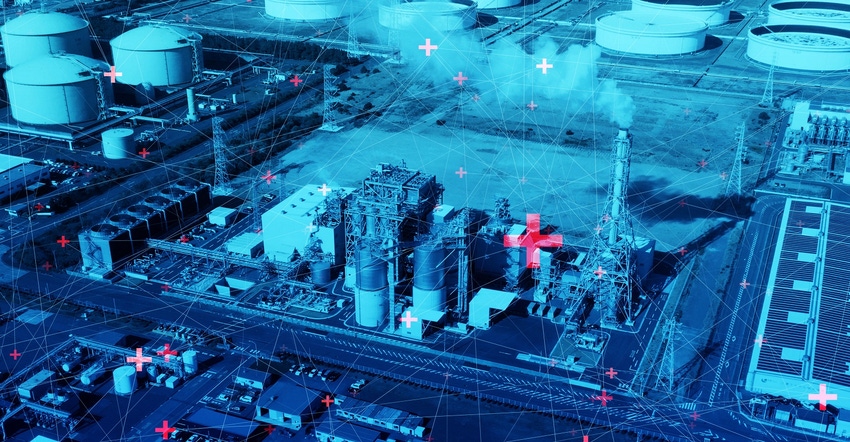Autonomous transformation is a step beyond Industry 4.0, where technology creates a more human future in the era of artificial intelligence.
January 22, 2023

Widespread autonomy is the next step after the digital transformation and advanced manufacturing. Brian Evergreen, the Global Head of Autonomous AI Co-Innovation at Microsoft Research studies autonomous transformation. He describes it as the evolution of work and the relationship between humans and machines.
We caught up with Evergreen to ask for further clarification about the autonomous transformation.
Design News: When you use the term autonomous transformation, it seems you’re using the term to describe a concept beyond autonomous vehicles. Do you include autonomous manufacturing? Other industries?
Brian Evergreen: Yes. When I use the term Autonomous Transformation, I’m referring to the next era of transformation that encapsulates much more than vehicles, though vehicles have received the most media attention when it comes to autonomy. I’m referring to the evolution of work and the relationship between humans and machines. In the industrial revolution, all physical work was broken down into its most basic work element and any work element that could be mechanized was mechanized, and the rest was given to humans in a move that treated humans like machines, effectively dehumanizing work.
Over the next century, new machines were continuously developed with the aim of mechanizing more and more tasks. The era of Digital Transformation over the past thirty years has transformed our society and the nature of work from analog to digital where possible, the primary implication being that more work could be done by the same number of humans.
Now, with the newest wave of technological advancements, we’re beginning to see around the corner of Digital Transformation to the era of Autonomous Transformation, which has the potential to right-size the equation of humans and machines in the workplace and break free from the local minutiae of the Industrial Revolution (industry x.0), which is why the tagline is of my book (“Autonomous Transformation”) is, intentionally counterintuitively, “creating a more human future in the era of Artificial Intelligence.”
DN: What are the aspects of autonomy that go beyond automation or digital transformation?
Brian Evergreen: I’ll answer your question with an example. If I wanted to program a machine to automatically create a product, automation would be programming that system to follow a series of steps automatically. “When weight is felt on the conveyor belt, bring arm #1 to coordinates x and y, etc.”
Digital Transformation adds sensors, migrates the data on the performance of the automation into the Digital realm, where it can be analyzed to understand historical performance, and the human-machine interfaces can provide richer insights and recommendations to the operators of the machines. Product designs can be analyzed against data from a digital twin of the factory to understand if the existing machinery can produce that new product at the right level of quality and output.
These are just a couple of examples. Autonomy extends the capabilities of the machine beyond that which can be explicitly programmed. So if weight is felt on the conveyor belt, instead of bringing the arm to previously hard-coded coordinates, which may not line up with the object that is meant to be picked up by the machine due to an error in the system that would not be accounted for by an automated system, autonomy provides the capability for the machine to have learned the skill of identifying where the object is on the conveyor belt and swinging its arm to the proper coordinates dynamically.
This extends the capabilities of systems tremendously while reducing the overall effort, as engineers used to spend months calibrating and explicitly programming machines that can now autonomously learn skills by trial and error. In terms of the extension beyond Digital Transformation, Autonomous Transformation has two key intertwined threads: the combined inflection points of technologies that move beyond the transition from analog to digital and to the transition from digital to autonomous, and the fact that Digital Transformation hit natural boundaries and limitations of what could be converted from analog to digital. Autonomous Transformation is different, as there is a significant body of work elements that could never be made digital, but can be made autonomous.
DN: What are some of the “adjacent technologies” that make up autonomous transformation? I would guess they would include AI, but do they also include sensor technology? Big Data? IoT?
Brian Evergreen: The technologies that makeup Autonomous Transformation are: Artificial Intelligence, Internet of Things, Digital Twins/Simulations, Robotics, and Mixed Reality.
DN: Could you paint a quick picture of the benefits of autonomous transformation?
Brian Evergreen: Our world is facing some of the greatest existential and social challenges in history. Our organizations, which are arguably best positioned to attend to those challenges and create a better future, are made up of systems that are inhospitable to social good initiatives or to create more human work.
We are incrementally improving and building on the systems created during the industrial revolution with an overlay of digital capabilities. Autonomous Transformation presents an opportunity, because the technologies that comprise Autonomous Transformation require that we build new systems in order to harness their potential, to reimagine our systems, and create a better, more human future by designing our organizations to create Profitable Good comprised of more human work.
About the Author(s)
You May Also Like





